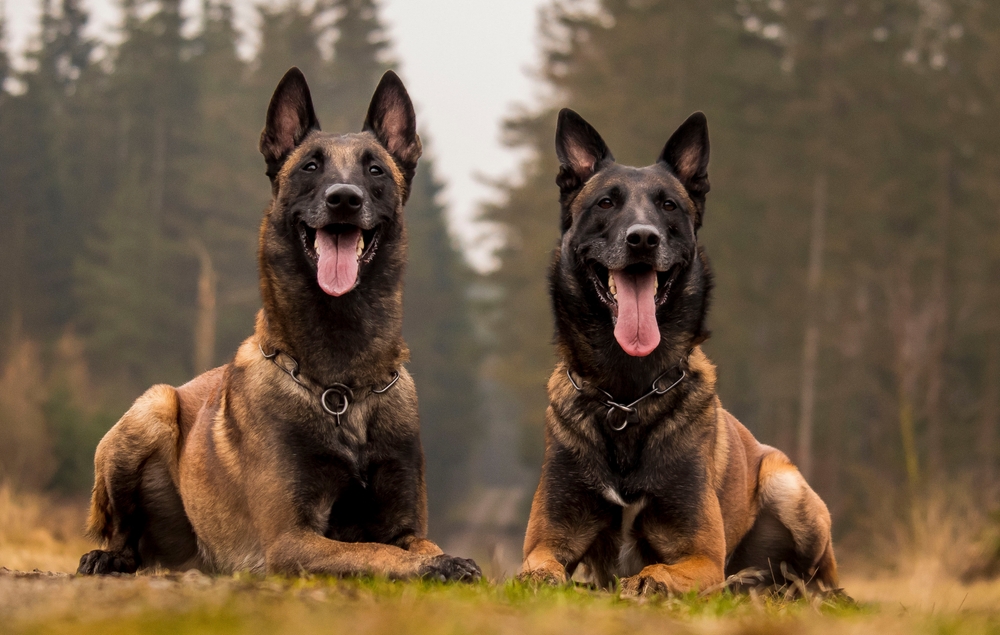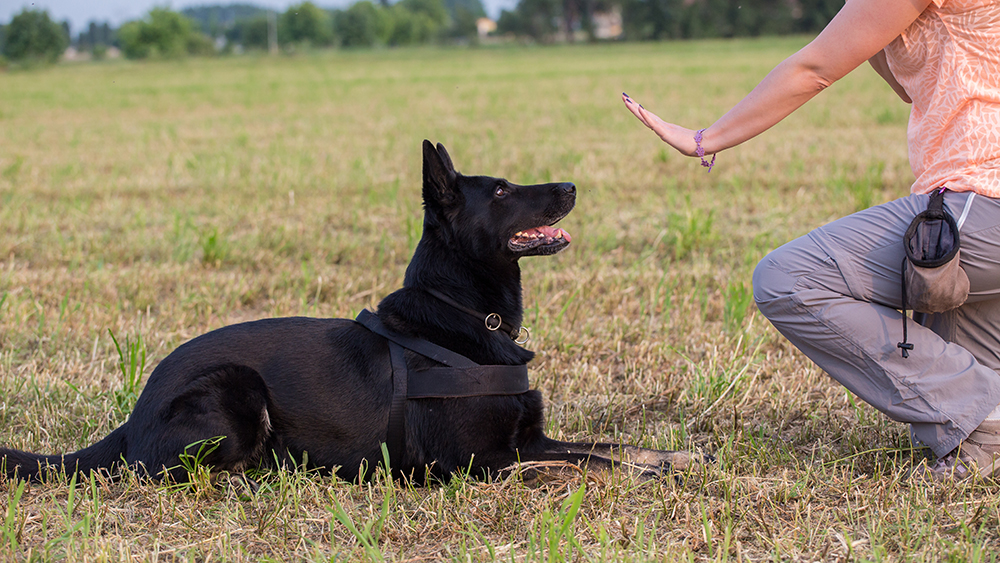Click Below to Skip Ahead
The Afghan Sheepdog is a unique and highly active hybrid dog breed. A mixture of the elegant and loyal Afghan Hound and the powerful and alert Belgian Sheepdog, this designer dog breed has a lot to offer prospective owners. However, these dogs are definitely not suitable for every house, family, or lifestyle. Read on to learn more about this unique hybrid and decide if it’s right for you.
Breed Overview
Height:
24–29 inches
Weight:
45–75 pounds
Lifespan:
11–18 years
Colors:
Black, brindle, cream, fawn, red,
Suitable for:
Experience dog owners, families with older children, active folks
Temperament:
Loyal, reserved, independent, sensitive, brave
The Afghan Sheepdog is a hybrid breed combining personality and appearance from the parent breeds, Afghan Hounds and Belgian Sheepdogs. Though the founding breeds are quite different in appearance, with the Afghan Hounds’ silky and regal coat and the Belgian Sheepdogs’ varying coat styles and lengths, they do have some very similar personality traits. Both parents are born and bred working dogs, so the Afghan Sheepdog is likely to maintain their parents’ hardworking, athletic, and energetic nature.
Afghan Sheepdog Characteristics
Afghan Sheepdog Puppies
We were unable to find any breeders that specialize in the Afghan Sheepdog. While that doesn’t mean you won’t be able to find one of these hybrid pups available for adoption, it does slightly complicate the process. We recommend checking out our local rescues and animal shelters to see if there’s an Afghan Hound x Belgian Sheepdog up for adoption. Sometimes breed-specific rescues will also have mixes up for adoption, so don’t forget to look at Afghan Hound or Belgian Shepherd rescues to see what is available.
Afghan Sheepdog Breed Origin & History
As the Afghan Sheepdog is a hybrid breed, not much is known about its origin or history. However, we do know quite a bit about the parent breeds and their origin,
The Afghan Hound is an ancient breed that predates the emergence of modern dog breeds in the 19th century. They originated in the cold mountainous region of Afghanistan and served as hunting companions and status symbols of royals and aristocrats.
The Belgian Sheepdog originated in Belgium and were bred to serve as cattle herders. However, the drive and versatility of the breed made them suitable for work beyond the pastures, too. When these dogs made their way to New York and Paris, they began working as police dogs and alongside border patrol agents. They even served as messengers and ambulance dogs during WWI.

Temperament & Intelligence of the Afghan Sheepdog
The temperament of the Afghan Sheepdog may vary, depending on which parent breed the pup takes after more. However, there some personality traits are shared by both breeds.
Your Afghan Sheepdog is likely to be energetic and active. Their working dog DNA may make them natural herders or great hunting partners. They’re likely to show uneasiness toward strange humans and animals, but this can be reduced through socialization and training.
The Afghan Sheepdog’s intelligence can vary depending on which parent’s DNA is more prevalent. Belgian Sheepdogs are highly intelligent, ranking in the top 15 of 130 dog breeds. This means they can understand new commands within 5 to 15 repetitions and obey the first command 85% of the time (or better). Conversely, the Afghan Hound falls much lower on the scale, ranking number 79. This means they have the lowest degree of working/obedience intelligence. Understanding new commands can take up to 100 repetitions or more, and they’ll often only obey the first command 25% of the time (or worse).
The Afghan Sheepdog may be slightly reserved and timid, with a somewhat independent nature resembling a cat. This is because their Afghan Hound parent is known for its graceful, dignified, and loyal nature.
Thanks to their Belgian sheepdog side, they may also be highly motivated for hard work but very sensitive. These dogs crave human companionship and are always bright-eyed and bushy-tailed for sports or activities in which they’ll always give their all.
Are These Dogs Good for Families? 🧑🧑🧒
Afghan Sheepdogs can make fantastic family pets. However, they may not be suitable for all family dynamics. They typically do well in homes with older children, but that’s not to say they cannot thrive in homes with younger kids. It’s best to adopt an Afghan Sheepdog when your children are young so the two can be raised together.
Proper supervision is essential anytime young children are left in the presence of an Afghan Sheepdog. They may have a reduced capacity for kids who are grabby or don’t fully understand how to respect boundaries. Additionally, their natural herding skills can lead to accidents or injuries if they knock over young children.
Thanks to their Belgian shepherd side, Afghan Sheepdogs may have strong protective, guarding, and territorial instincts. They can also be courageous, vigilant, and attentive, all qualities that make them excellent watchdogs for your family. However, if they take after their Afghan Hound side, they may be too reserved to be a quality watchdog.
It may also be good to know what type of Belgian Sheepdog your pup’s parent was. There are some slight personality differences between the four types, which may make some less appropriate for
Does This Breed Get Along With Other Pets? 🐶 😽
If properly trained and socialized from a young age, the Afghan Sheepdog can get along swimmingly with other well-trained dogs. Their Belgian Sheepdog side is known for forming strong bonds with dogs they live with and work alongside, so if you’re a multi-dog household, this is something heartwarming to look forward to. However, this love of canine companionship doesn’t always apply to Afghan Hounds, so you may want to tread carefully if you know your dog favors that parent more.
The Afghan Sheepdog may not be the best breed for households with cats, reptiles, birds, or pocket pets like guinea pigs or hamsters. Both parent breeds can have a strong prey drive, which may make them more likely to chase or even hurt other household pets. However, some pups can get along well with cats, especially if they’ve been raised with them.
Things to Know When Owning an Afghan Sheepdog
Food & Diet Requirements 🦴
Afghan Sheepdogs should be fed high-quality commercial dog food formulated for their current life stage. Puppy food should be offered until your pet is at least one year old before transitioning them to adult dog food to ensure your pet is getting the nutrients they need to grow and thrive at a proper rate.
Puppy food is more calorically and nutrient-dense than food formulated for adults. It typically contains more protein and fat to support your pup’s growth, and once they hit that one-year mark, they won’t need as many calories.
If your Afghan Sheepdog is highly active, you may also consider dog food specifically for active breeds. These diets will contain protein and fat content similar to that your pup was eating in puppyhood to account for their higher energy requirement.
Exercise 🐕
The Afghan Sheepdog’s high energy level means it requires a lot of exercise daily. Physical activity doesn’t need to only look like walks, though. These dogs will happily tag along on a variety of adventures and can even excel in dog sports like luring, agility, herding, flyball, and obedience.
With proper training, your Afghan Sheepdog can also make a great hiking partner. However, they may be a bit nervous around strangers, which is where socialization will come in handy.
Training 🦮
The Afghan Sheepdog generally responds well to training, especially if they favor their Belgian Sheepdog side over their Afghan Hound side. The former breed is more intelligent and much more trainable than the latter. That’s not to say your Afghan Hound-favoring pup won’t be trainable, but it may take more time and effort.
Early training is essential for these dogs, as they may try to dominate weaker-willed owners who are not willing or able to step into the alpha role. For this reason, we don’t recommend the Afghan Sheepdog for a first-time dog owner. Owners should have some degree of confidence and experience with dogs before adopting this breed.
Grooming ✂️
The look of your Afghan Sheepdog’s coat can vary greatly, depending on what type of Belgian Sheepdog was used during breeding and which parent your pup looks more like.
The long, fine-textured coat of the Afghan Hound requires a considerable amount of care and grooming. If your pup has this coat type, you should always bathe them before grooming to make it more manageable. Some groomers recommend bathing Afghan Hounds as often as two to four times monthly.
The Belgian Sheepdog’s grooming needs aren’t as demanding. Their double coat is pretty easy to care for, especially when it’s not shedding season. A once-weekly brushing should be all your dog needs if they favor their Belgian Sheepdog side. Baths can be very infrequent unless your pup gets into something messy.
Like other breeds, the Afghan Sheepdog will require regular nail trims and dental care.
Health and Conditions 🏥
The Afghan Sheepdog has a relatively long lifespan, though they may be prone to the health conditions that affect their parent breeds.
Belgian Sheepdogs can develop joint conditions like progressive retinal atrophy and epilepsy.
Afghan Hounds can be prone to developing gastric dilatation-volvulus, hereditary necrotizing myelopathy, and panosteitis.
Both breeds can develop joint conditions like elbow and hip dysplasia and hypothyroidism. Due to their lower body fat, they can also be sensitive to anesthesia, which may require specialized veterinary care if they need to have surgical procedures.
- Eye conditions
- Sensitivity to anesthesia
- Epilepsy
- Gastric dilatation-volvulus
- Hypothyroidism
- Hereditary Necrotizing Myelopathy
- Panosteitis
Male vs Female
Male Afghan Sheepdogs generally grow to be slightly taller and heavier than their female counterparts. Males can be as tall as 24 to 27 inches, while females should be around the 22- to 25-inch mark. As for weight, males can weigh between 55 and 75 pounds, and females can weigh between 40 and 60 pounds.
3 Little-Known Facts About the Afghan Sheepdog
1. There are four varieties of Belgian Sheepdog.
There are four distinct varieties of the Belgian Sheepdog, each distinguishable by their coat type and color. The Groenendael has long, black hair; the Laekenois is fawn-colored with rough air; the Malinois is also fawn-colored but sports a shorter coat; and the Tervuren is a long-haired fawn-colored breed.
2. The Afghan Sheepdog combines traits from the hound group and the herding group.
Afghan Hounds are part of the “Hound” group of dogs, while Belgian Sheepdogs are part of the “Herding” group.
Hound dogs share the common ancestral trait of being used for hunting. While Afghan Hounds aren’t typically used as hunters today, they are still often seen in the sport of lure coursing.
Herding dogs share the instinctual ability to control the movement of other animals. The instinct to herd is so strong and innately built into these dogs that some have been known to gently herd their human caretakers, especially if they’re children.
3. The Afghan Sheepdog doesn’t like strangers.
The Afghan Hound and Belgian Sheepdog are friendly and outgoing toward their family members but are reserved and aloof around strangers. They may be vigilant and distrustful around new people, but socialization and training can help address such behaviors.
Final Thoughts
The Afghan Sheepdog is a highly active mixed dog breed that combines some of the best qualities of its parent breeds. They have the confidence, grace, and loyalty of the Afghan Hound and the intelligence, obedience, and sensitivity of the Belgian Shepherd.
These dogs can be highly trainable and versatile. Their high energy levels and working dog history mean they require a lot of exercise, so potential owners should be willing and able to deliver on that.
This isn’t a breed we’d recommend for first-time dog owners, as they can be stubborn and strong-willed. They need an owner who’s confident and willing to step into the alpha role. We also wouldn’t recommend the Afghan Sheepdog for couples who are considering or just beginning to expand their families. While these dogs can get along great with children, it’s often best to wait until your kids are a bit older and more responsible before welcoming a dog with such power into the home.
Featured Image Credit: (L) Lisjatina, Shutterstock | (R) ArtdayAnna, Shutterstock












